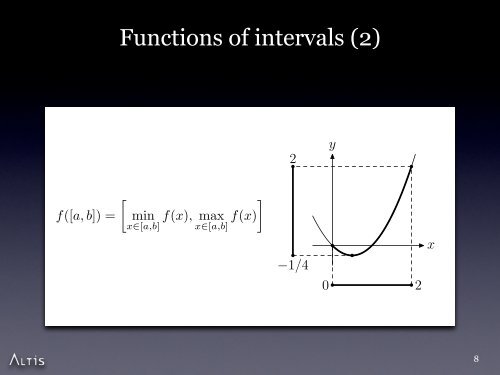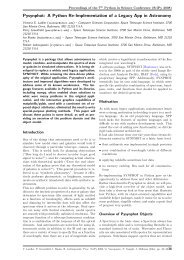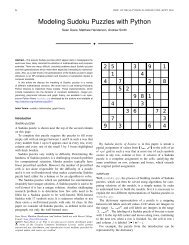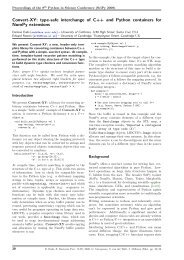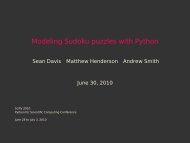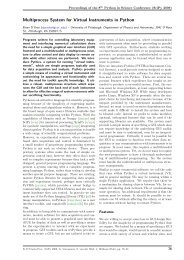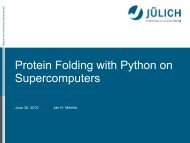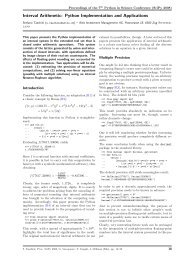Interval arithmetic - SciPy Conferences
Interval arithmetic - SciPy Conferences
Interval arithmetic - SciPy Conferences
You also want an ePaper? Increase the reach of your titles
YUMPU automatically turns print PDFs into web optimized ePapers that Google loves.
Functions of intervals (2)<br />
R ∪ {−∞, +∞}. Let f([a, b]) be the image of the bounded interval, equation<br />
closed interval [a, b] under the function f. Real analysis<br />
result.<br />
teaches that if the interval is bounded and the The lattice generated by t<br />
function is continuous over the interval, then f([a, b]) y real set, L(IR ∗ ), is the sm<br />
is also a closed, bounded interval, and, more significantly,<br />
2 ing IR ∗ that is closed und<br />
this extension accomodate<br />
[<br />
]<br />
the union of two intervals<br />
f([a, b]) = min f(x), max (1) in the lattice can always b<br />
x∈[a,b] x∈[a,b]<br />
of closed intervals in R ∗ . I<br />
Computing the minumum and maximum is trivial if<br />
the function is monotonic (Figure 1), and −1/4 also for<br />
the non-monotonic standard mathematical functions 0<br />
>>> k = interval([0, x 1]<br />
represents the the union [0<br />
The intervals 2 [0, 1], [2, 3],<br />
(even-exponent power, cosh, sin, cos...) these are relatively<br />
easy to determine.<br />
connected components of k<br />
sists of only one componen<br />
>>> interval[1, 2]<br />
interval([1.0, 2.0])<br />
signifying the interval 8[1, 2


